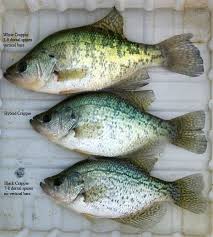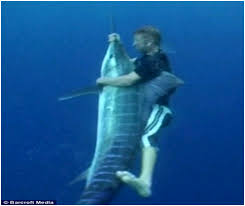Give a man a fish, goes the Chinese proverb, and you feed him for a day. Teach a man to fish, and he will bore you to tears on summer Mondays with an account of how he and his wife Marjene caught over 170 crappie at the Lake of the Ozarks over the weekend.

Crappie: As a meal, about as bad as the name.
Teach a man to hand-fish, on the other hand, and he will regale you with tales of how he wrestled a fish that was bigger than a dog but smaller than a cow out of the water and into his truck; now that’s worth hanging around the water cooler for.

“Did I wash my hands before returning to work? Uh, no.”
It can fairly be said that sports–that great male time-waster–has been at the vanguard of social change in America. Think of Jackie Robinson, the first African-American to play major league baseball. Consider Kathrine Switzer, the first woman to run the Boston Marathon. Or how about Manny Ramirez, the first Dominican outfielder to take a leak behind a manually-operated scoreboard during a pitching change in an American League game. Truly, as a nation, we have much to be proud of.

Kathrine Switzer, failing the Boston Marathon cojones test.
But many are surprised to hear that, until recently, there were still obstacles to full participation in the athletic endeavors that make this country great. One such barrier is laws, such as that in force in Missouri until the first decade of the 21st century, that made it illegal to “noodle,” or fish with one’s hands.
As a teenage boy in a small Missouri town, I often worked with country people who spoke of noodling. Not having much interest in fishing, I never accompanied them on their clandestine trips to muddy creek banks, where they told me they would stick their arms into hollow logs, risking bites by snakes or snapping turtles, to catch catfish by hand. As a result, I have wrongly assumed all these years that the fish they caught would fit on a dinner plate.

Humping a giant catfish: Dinner and a movie not required.
It turns out these men were diving under water, holding their breath and sticking their arms into catfish “holes” where they would grab fresh-water behemoths, smaller than a jet ski but not by much, and wrestle them into submission. Where noodling is permitted, a fish must typically be as much as two feet long in order to be a legal catch. Catfish are bottom feeders who remain stationary for long periods of time, eating anything that floats by–smaller fish, dead dogs, outboard motors–and as a result can grow to be enormous.

“He followed me home–can I keep him?”
You would think that the Missouri legislature, in its wisdom, would have long ago followed the example of the other eleven states where hand-fishing (also referred to as “hogging”) is legal, and let man and fish fight it out fair and square. Missouri’s scruples in the area of man-fish relations stemmed not from fear for fisherman’s safety, but from a solicitous regard for the fishes’ sex life. Hand-fishing, according to fish and game officials, depletes the number of sexually mature fish. Well, what do you want noodlers to do–knock before entering?
Since moving to the east coast nearly half a century ago, I’ve gone deep-sea fishing a number of times and had naively formed the opinion that it was more challenging than fresh-water fishing. Having conducted further research into hand-fishing, I now believe that the only way ocean fishing could measure up to the challenge of noodling is for the beer-sodden men who pay hundreds of dollars to fish off Florida or Cape Cod to crawl overboard, find a bluefish or a marlin and subdue their prey using nothing but wrestling holds learned on WWE Royal Rumble.
So here’s to America’s hand-fishers, true sportsmen who eschew fish-finders and other high tech doo-dads that unfairly tilt the pond in favor of humans. I salute you, but I have one request.
If you don’t mind, I’d rather not shake your hand.



